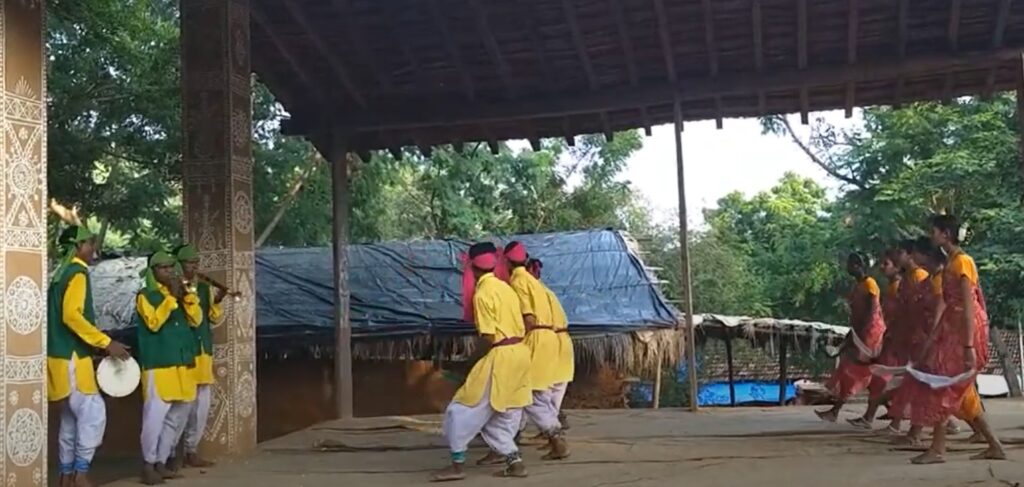Along with its beautiful sceneries, Madhya Pradesh has also brought us beautiful folk dances. Grida folk dance is about communities coming together and joining hands. It brings people closer and strengthens relations. The main season for Grida is when the Rabi crop is ready for harvest. They meet to congratulate each other for having a good harvest. Everyone’s hard work has paid off and now they deserve a break.

Grida Dance Performance
It has three phases.
- Sela- In this step footwork is slow but steady.
- Selalarki- In this step footwork is comparatively faster and brisker.
- Selabhadoni- In this step dancers break the footwork and their entire body sway in motion while performing Grida.
By the third step, dancers become energetic and they start dancing with strong leg and hand movements.
Costumes
Male dancers wear a turban adsorb with peacock feathers and other ornaments. The turban is made of either muslin or silk. Silk turbans are a part of a special occasion, they do not wear them at every Grida performance. They wear knee-length dhoti and a shirt. Male dancers also wear traditional jewellery. They wear bangles, necklace, and anklets made of silver or gold. In the right-hand male dancers hold staff and in the left hand, they hold a handkerchief.
Female dancers wear a knee-length saree and decorate their hair with palm and other leaves. Apart from clothing male and female dancers wear similar accessories. In the right-hand female dancers hold a clapper or thiski and in the left hand, they carry a colourful handkerchief.
Joy of Grida Dance
The speciality of Grida is that villagers from another village come to one place to celebrate happiness together while performing this dance. They all take part in the performance. It is like a big family gathering where each participant enjoys themselves and love being there. At the end of the day when the performances are done, they bid each other goodbye with the promise of meeting again for Grida performance. It is not necessary that only one village keep hosting the Grida. Other villages do it too where they invite others as well.
Grida is a dance done in the joy of having swaying crops in the field, it is a dance done in the joy of completing one more year with happiness and prosperity.
